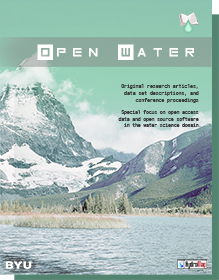Article Title
Abstract
From a hydrological modellers perspective, large river basins are complex systems with several generalisable attributes. Unfortunately, some river basins have very unique features that challenge models and their developers or users, respectively. Heavily modified basins are one example. In this case it is often necessary to incorporate impoundments by dams and reservoirs or to account for water withdrawals directly from the river or from groundwater for agricultural, industrial or domestic uses. Water allocation within the catchment, from another basin into the catchment under study or vice versa can also be an issue that complicates the modelling task. Some river basins have large riverine wetlands that are periodically inundated, like the Inner Niger Delta in Mali or the Sudd and the many papyrus swamps in the White Nile. These wetlands increase actual evapotransporation enormously, delay discharge due to their storage function and increase groundwater recharge. Both the sources of the Blue and the White Nile are lakes that act comparably to huge reservoirs. Simulating discharge of rivers fed by glaciers, such as the Danube in Europe or the Amudarya in Central Asia, is also difficult, particularly during the periods with low or no rainfall. The list of challenges is by far not complete here, but the interesting question is: How do we deal with it? Basically, there are three options: 1) Ignore these special characteristics and apply the model by setting parameters out of reasonable ranges, 2) Accept that the model is not applicable at all, or 3) Incorporate new modules to adapt the model for specific purposes. In recent years we came across several challenges and solved many of them by developing new functions and modules. Following are our major developments: 1) A reservoir module to account for dam management and to calculate hydropower electricity production, 2) An inundation module to simulate flooding processes in large riverine wetlands, and 3) An improved snow melt and glacier module to simulate nival runoff regimes. Last but not least, it should be noted that these developments are only possible, if the model code is available.
BYU ScholarsArchive Citation
Liersch, Stefan; Koch, Hagen; Huang, Shaoshun; Vetter, Tobias; Hattermann, Fred F.; and Krysanova, Valentina
(2013)
"Recent developments of the SWIM eco-hydrological model to site-specific characteristics of large basins,"
Open Water Journal: Vol. 2:
Iss.
1, Article 16.
Available at:
https://scholarsarchive.byu.edu/openwater/vol2/iss1/16
